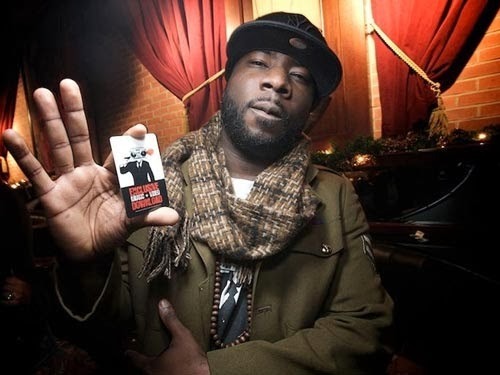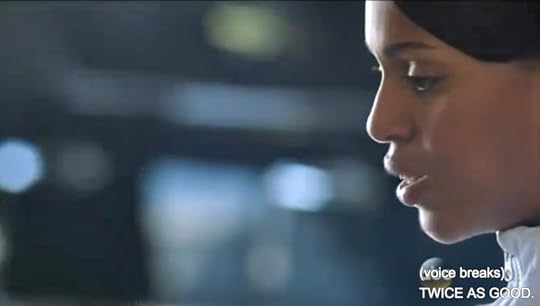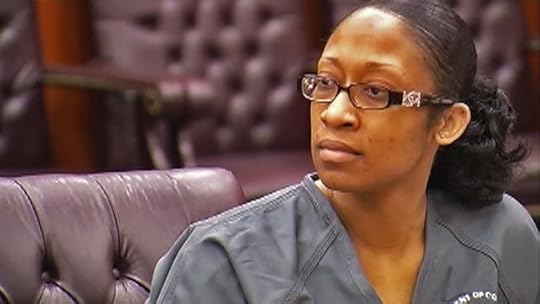Mark Anthony Neal's Blog, page 863
October 8, 2013
Left of Black S4:E4 | Writing is Fighting: Elaine Richardson and ‘Brothers Writing to Live’
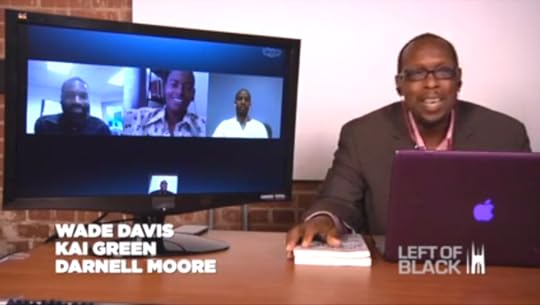 Left of Black S4:E4 | Writing is Fighting: Elaine Richardson and ‘Brothers Writing to Live’
Left of Black S4:E4 | Writing is Fighting: Elaine Richardson and ‘Brothers Writing to Live’
Left of Black host and Duke University Professor Mark Anthony Neal is joined, via Skype, by The Ohio State University Professor Elaine Richardson (@DoctaE1), author of the memoir PHD (Po H# on Dope) to Ph.D.: How Education Saved My Life, which traces her life as young sex-worker to one of the leading socio-linguist in the United States.
Later Neal is joined by, scholar activist Darnell Moore (@Moore_Darnell), writer and filmmaker Kai M. Green (@Kai_MG) and LGBTQ Advocate and former NFL player Wade Davis II (@Wade_Davis28), members of the collective Brothers Writing to Live.Left of Black is a weekly Webcast hosted by Mark Anthony Neal and produced in collaboration with the John Hope Franklin Center at Duke University.
***
Episodes of Left of Black are also available for free download in @ iTunes U
***
Follow Left of Black on Twitter: @LeftofBlack Follow Mark Anthony Neal on Twitter: @NewBlackMan
Published on October 08, 2013 10:25
October 7, 2013
A Jazz Man Considers 'Musical Genocide'
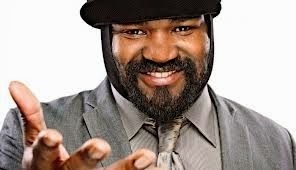 A Jazz Man Considers 'Musical Genocide'
By: Mark Anthony Neal |
TheRoot.com
A Jazz Man Considers 'Musical Genocide'
By: Mark Anthony Neal |
TheRoot.com
Gregory Porter's album Liquid Spirit is rare for a black male artist.
(The Root) -- When was the last time the culture produced a great black male jazz singer? To be sure, there is no shortage of contemporary black female jazz vocalists -- Dianne Reeves, Cassandra Wilson and Lizz Wright, to name just a few -- all at the peak (or close to, in Wright's case) of their artistry. I'm also aware that in some coffee house or around-the-way basement club there is a dude who would make us all forget who Billy Eckstine or Jon Hendricks was. No, this question is less about talent and more about the lack of visible incentive in the larger commercial world -- and frankly, black cultural spaces -- for young African-American men to imagine themselves as vocal caretakers of a music that folks often decry as dead.
For many young black male singers, contemporary gospel music and R&B seem the most likely road to fame and reward; we only need to scan series like The Voice, American Idol or even BET's Sunday Best to see how that plays out. Generations ago, when jazz had a presence in still largely segregated and mixed-class black communities, not only was the music more accessible to African-American youth; it was seen as a viable vocation. For many young black males, jazz artists also represented examples of how they could be men in the world. Artists like Miles Davis (with his Hickey Freeman suits), Nat King Cole (in his jazz trio days), Lester Young, Duke Ellington and Eckstine were the epitome of black style -- cutting a figure, as art historian Richard Powell might describe it.
Read the Full Essay @ The Root.com
Published on October 07, 2013 16:18
Blitz: The Ambassador Of Hip-Hop And African Music
Published on October 07, 2013 15:51
Trading Races, A Historical Role Playing Game by Adeline Koh
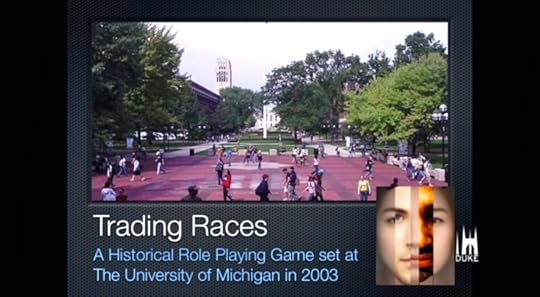 Franklin Humanities Institute
Franklin Humanities InstituteTrading Races is an elaborate paper-based role-playing game set at the University of Michigan in April 2003. Players take on the roles of real historical characters and multi-ethnic and multi-national members of an imaginary Student Assembly as they tackle the Supreme Court affirmative action cases brought against the university. Adeline Koh is Director of DH@Stockton and and assistant professor of literature at Richard Stockton College in NJ. She came to Duke on a fellowship.
Published on October 07, 2013 15:33
October 6, 2013
For Colored Boys, REDEMPTION | 'Take All the Time You Need' Ep. 6 of 8 (dir. Stacey Muhammad)
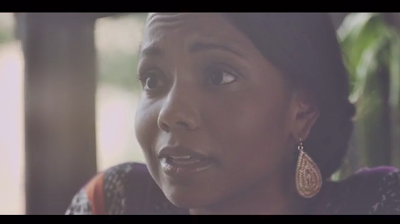 WildSeedFilms
WildSeedFilmsSeason 1, Episode 6 of 8 For Colored Boys, REDEMPTION.
A soul-stirring dramatic series about a father's attempt to repair his broken family after being released from prison, starring Rob Morgan and Julito McCullum with Tim Reid and Jacinto Taras Riddick.
with Lauren Hooper, Nashawn Kearse, Kai Muhammad, Jas Anderson, Ryan Stephenson, and Brittany Chance.
Published on October 06, 2013 18:54
"Twice as Good": Channeling Black Parenting on 'Scandal'
Published on October 06, 2013 15:33
Left of Black (the "Bring the Noise" Remix): Professor Gaye Theresa Johnson & Chuck D Talk Contemporary Black Politics
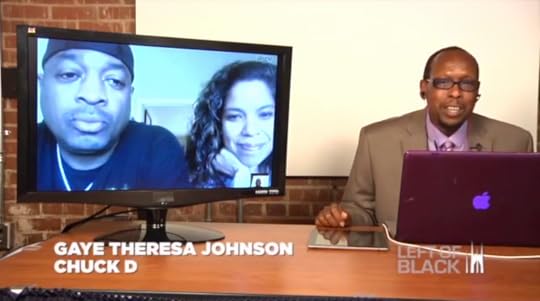 On this special segment of Left of Black, host Mark Anthony Neal sits down with Professor Gaye Theresa Johnson, author of
Spaces of Conflict, Sounds of Solidarity: Music, Race, and Spatial Entitlement in Los Angeles
and her partner Chuck D of Public Enemy.
On this special segment of Left of Black, host Mark Anthony Neal sits down with Professor Gaye Theresa Johnson, author of
Spaces of Conflict, Sounds of Solidarity: Music, Race, and Spatial Entitlement in Los Angeles
and her partner Chuck D of Public Enemy.
Published on October 06, 2013 12:05
'The Fade': Four Barbers, Three Continents, One Film
Published on October 06, 2013 09:48
October 5, 2013
Let the Fire Burn: A Review by Gaye Theresa Johnson
 Let the Fire Burn: A Review
by Gaye Theresa Johnson | HuffPost BlackVoices
Let the Fire Burn: A Review
by Gaye Theresa Johnson | HuffPost BlackVoices"...If one really wishes to know how justice is administered in a country, one does not question the policemen, the lawyers, the judges, or the protected members of the middle class. One goes to the unprotected – those, precisely, who need the law's protection most -- and listens to their testimony." –James Baldwin
Let the Fire Burn, the new documentary from director John Osder, recounts seven years of persecution by Philadelphia police of the MOVE organization, and the city-sanctioned bombing of their home and headquarters in 1985. Six adults and five children died when Mayor Wilson Goode, police commissioner Gregore Sambore, and members of the Philadelphia police and fire departments acted in concert to let MOVE members perish in a fire ignited when police dropped a bomb on the home. The film's title derives from Goode's order to "let the fire burn" as hoses were poised to extinguish it. MOVE members who attempted to escape were met with over 10,000 rounds of ammunition fired by Philadelphia police, sending the would-be escapees back into the inferno.
Sixty-one homes were destroyed and over 250 residents of the mainly African-American Powelton Village neighborhood were displaced in the fire that ensued. Ramona Africa, the only adult survivor, spent six years in prison, denied parole every year for refusing to disassociate herself from MOVE. Michael Ward (Birdie Africa) was the only child to survive, left physically scarred by the fire and emotionally traumatized by the loss of his mother in the fire. He died just last week, at the age of 41, and the circumstances of his death remain obscure. Mayor Goode, now a minister focusing his efforts on troubled youth, was described by LAPD Chief Daryl Gates as "one of my heroes." President Reagan never mentioned the incident.
The power of this film, in presentation and creation, is nearly beyond description. The Sofia Metropolitan Symphony Orchestra delivered a beautiful score, and Nels Bangeter easily executes one of the best chief editing jobs in recent memory, piecing the story together from footage culled from the archives of news channels, documentaries, and personal video. Osder's choice to let news and PCIS investigative commission footage dominate is brilliant: it leaves no side of the story untold, and in so doing provides some of the most transparent and damning testimony from city officials ever witnessed – in their own words.The audience experiences what seems like every bit of seven years in 135 minutes, beginning with the 1978 confrontation between police and MOVE, after which nine MOVE members were sentenced to serve 30-100 years - each - for the shooting death of one officer. The angle of the entry wound was such that it would have been impossible for those convicted of the shooting to have committed the crime: all were trapped in the basement of the MOVE residence, and Officer Ramp was shot from behind and above in what many have conjectured was a case of friendly fire. One of the MOVE 9 has since died in prison, and the remaining eight are denied parole in every instance, every year, though there were no functioning firearms inside the MOVE house at the time of the incident.
Osder does not retreat from footage that portrays MOVE as an organization in the throes of political growing pains, struggling to resolve its contradictions. In his deposition, 13-year-old Birdie Africa recounts the hidden desires of the MOVE children to escape what was clearly a difficult and confusing existence, but also remembers with great confidence that all the children were loved and cherished.
Taken together, the complex portrayal of MOVE reveals an organization still finding itself, and the sustained and well-funded efforts by police to eviscerate MOVE altogether makes it a wonder that they were able to continue at all. For the first time in any mainstream narrative of MOVE, we get a glimpse of Black families who refused to allow their radical dreams for self-governance and democracy die with the third world internationalist movements destroyed by COINTELPRO. Osder gives us a picture of a people with virtually no contemporaries, trying for a new way of life amid the shredding of the social safety net and the organized abandonment of communities of color during the heyday of supply-side economics. "I never knew," one member declares, "that revolution consisted of revolutionizing myself."
When the police initiated their two-day siege on 6221 Osage Avenue in 1985, they began by declaring, "Attention MOVE, this is America," presuming the co-signature of an entire nation upon their singular intention to destroy the organization. The footage deployed by Osder and Bangeter locates us squarely in the mid-'80s, but Let the Fire Burn instructs us that history is not over. It reveals just one instance of America's persistent, unapologetic, and unrestrained assaults against those who wish to reimagine what freedom means through self-governance.
The film is heartbreaking, and the filmmakers make no attempt to extract the audience from the devastation and ideological ruin of the fire. Yet this is where the genius of the filmmakers really shines: though there is no narrative from the MOVE 9 who remain behind bars, and though the testimony of those killed in the fire was silenced, the freedom seekers of Let the Fire Burn remind us that the blasted and unfulfilled hopes of the past are part of the struggle for a meaningful future.
Attention America: this is MOVE.
***
Gaye Theresa Johnson is an Associate Professor of Black Studies with affiliations in the Departments of History and Chicana/o Studies at UC Santa Barbara. Her first book, Spaces of Conflict, Sounds of Solidarity: Music, Race, and Spatial Entitlement in Los Angeles (University of California Press) is a history of civil rights and spatial struggles among Black and Brown freedom seekers and cultural workers in LA. Johnson’s second book, entitled Women in Hip Hop: A Radical Herstory, is under contract with Haymarket Press. Johnson is a Founding Partner of Sol Sisters Rising, a collective dedicated to elevating women of color in film.
Published on October 05, 2013 20:50
October 2, 2013
Marissa Alexander 'Stands Her Ground' and Gets New Trial
Published on October 02, 2013 11:19
Mark Anthony Neal's Blog
- Mark Anthony Neal's profile
- 30 followers
Mark Anthony Neal isn't a Goodreads Author
(yet),
but they
do have a blog,
so here are some recent posts imported from
their feed.


